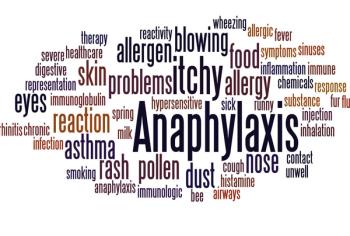
Immunotherapy Quiz: 2018 Guidelines on Rhinitis
Where do US guidelines on immunotherapy for rhinitis overlap with new 2018 recommendations from Europe? Answer these 5 questions to find out.
Allergy immunotherapy-subcutaneous and sublingual-helps millions of people with allergic disease where traditional pharmacotherapy is insufficient.
The European Academy of Allergy and Clinical Immunology (EAACI) just released its
Question 1.
Answer: D. Both A and B. According to 2018 EAACI guidelines, continuous SCIT is recommended in both adults (strong recommendation) and children (moderate recommendation) who have moderate to severe seasonal allergic rhinitis. Studies suggest low risk of systemic side effects, however, most studies have combined adult and child data. Only 1 randomized controlled trial has reported only on pediatric data. Pre-coseasonal SCIT, continuous sublingual immunotherapy (SLIT), and pre-coseasonal SLIT are also recommended in these populations.
Question 2.
Answer: B. False. Due to lack of evidence, the EAACI strongly recommends against using allergen mixtures in allergen immunotherapy. Instead, the EAACI strongly recommends using either a single allergen or a mixture of allergens from the same taxonomic family, such as a mixture of grasses, trees, or house dust mites. Mixing allergens may have a dilutional effect, cause allergen degradation, and efficacy has not been proven.
Question 3.
Answer: B. Pregnant women. The guidelines consider allergen immunotherapy to be contraindicated in the following groups: uncontrolled or severe asthma, active systemic autoimmune disorders, active malignant neoplasm, and pregnancy. Allergen immunotherapy should be used with caution when the benefits outweigh the risks in those with partially controlled asthma, on beta blocker therapy, with severe cardiovascular disease, systemic and organ-specific autoimmune diseases in remission, severe psychiatric disorders, poor treatment adherence, primary and secondary immunodeficiencies, and with a history of serious systemic reactions to allergen immunotherapy.
Question 4.
Answer: C. 3 years. For long-term benefits, the EAACI recommends that allergen immunotherapy should be continued for 3 years (strong recommendation). While duration of effect varies by type of therapy (eg, SCIT, SLIT with grass pollen tablets, house dust mite SLIT, grass pollen SCIT) studies have suggested sustained benefit for 3 to 5 years after treatment discontinuation. In children, a 3-year course of allergen immunotherapy may decrease future risk of developing asthma.
Question 5.
Answer: B. Diphenhydramine. The EAACI strongly recommends medication with an antihistamine before administering allergen immunotherapy (both SCIT and SLIT). Administering an antihistamine can decrease the frequency and severity of local skin reactions. However, it does not completely eliminate the risk of systemic reactions, including anaphylaxis. The EAACI recommends that patients should remain under observation for 30 minutes after receiving either SLIT or SCIT.
Source: Roberts G, Pfaar O, Akdis CA, et al.
Newsletter
Enhance your clinical practice with the Patient Care newsletter, offering the latest evidence-based guidelines, diagnostic insights, and treatment strategies for primary care physicians.

































































































































































































































































































